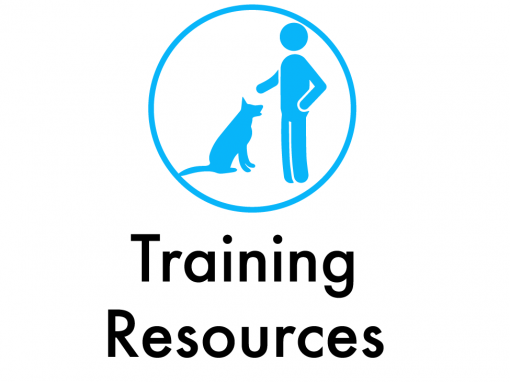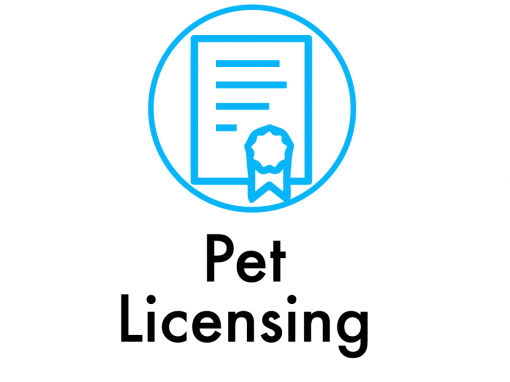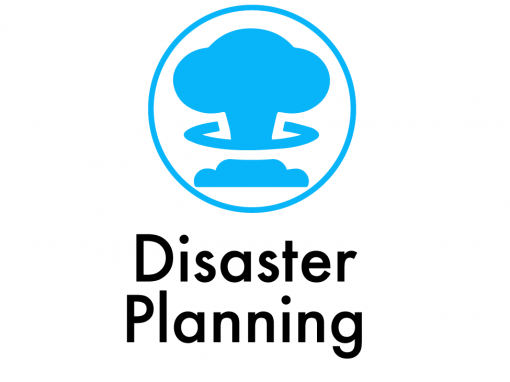



Making a Disaster Plan for Your Pet
Humane Society of the United States
Start getting ready now—ID your pet
Make sure that cats and dogs are wearing collars and identification tags that are up to date. You’ll increase your chances of being reunited with pets who get lost by having them microchipped; make sure the microchip registration is in your name. But remember: The average citizen who finds your pet won’t be able to scan for a chip, but they will probably be able to read a basic tag!
Put your cell phone number on your pet’s tag. It may also be a good idea to include the phone number of a friend or relative outside your immediate area—in case you have had to evacuate.
If you evacuate, take your pet
Rule number one: If it isn’t safe for you, it isn’t safe for your pets. You have no way of knowing how long you’ll be kept out of the area, and you may not be able—or allowed—to go back for your pets. Pets left behind in a disaster can easily be injured, lost or killed. Remember to make plans for ALL your pets; during natural disasters, disaster plans for feral or outdoor cats, horses and animals on farms can be lifesavers.
Pledge to Bring Your Pet With You When a Disaster Strikes
Rule number two: Evacuate early. Don’t wait for a mandatory evacuation order. Some people who have waited to be evacuated by emergency officials have been told to leave their pets behind. The smell of smoke or the sound of high winds or thunder may make your pet more fearful and difficult to load into a crate or carrier. Evacuating before conditions become severe will keep everyone safer and make the process less stressful.
Find a safe place to stay ahead of time
Never assume that you will be allowed to bring your pet to an emergency shelter. Before a disaster hits, call your local office of emergency management to see if you will be allowed to evacuate with your pets and verify that there will be shelters in your area that take people and their pets.
Contact hotels and motels outside your immediate area to find out if they accept pets. Ask about any restrictions on number, size and species. Inquire if a “no pet” policy would be waived in an emergency. Keep a list of animal-friendly places handy, and call ahead for a reservation as soon as you think you might have to leave your home. For help identifying pet-friendly lodgings, check out these websites:
- Bringfido.com
- Dogfriendly.com
- Doginmysuitcase.com
- Pet-friendly-hotels.net
- Pets-allowed-hotels.com
- Petswelcome.com
- Tripswithpets.com
Make arrangements with friends or relatives. Ask people outside your immediate area if they would be able to shelter you and your pets—or just your pets—if necessary. If you have more than one pet, you may need to arrange to house them at separate locations.
Consider a kennel or veterinarian’s office. Make a list of boarding facilities and veterinary offices that might be able to shelter animals in disaster emergencies (make sure to include their 24-hour telephone numbers).
Check with your local animal shelter. Some shelters may be able to provide foster care or shelter for pets in an emergency. But keep in mind that shelters have limited resources and are likely to be stretched during a local emergency.
Plan for your pet in case you’re not home
In case you’re away during a disaster or evacuation order, make arrangements well in advance for someone you trust to take your pets and meet you at a specified location. Be sure the person is comfortable with your pets and your pets are familiar with them. Give your emergency caretaker a key to your home and show them where your pets are likely to be (especially if they hide when they’re nervous) and where your disaster supplies are kept.
If you have a pet-sitter, they may be able to help. Discuss the possibility well in advance.
If you stay home, do it safely
If your family and pets must wait out a storm or other disaster at home, identify a safe area of your home where you can all stay together.
- Close off or eliminate unsafe nooks and crannies where frightened cats may try to hide.
- Move dangerous items such as tools or toxic products that have been stored in the area.
- Bring your pets indoors as soon as local authorities say trouble is on the way. Keep dogs on leashes and cats in carriers, and make sure they are wearing identification.
- If you have a room you can designate as a “safe room,” put your emergency supplies in that room in advance, including your pet’s crate and supplies. Have any medications and a supply of pet food and water inside watertight containers, along with your other emergency supplies. If there is an open fireplace, vent, pet door or similar opening in the house, close it off with plastic sheeting and strong tape.
- Listen to the radio periodically, and don’t come out until you know it’s safe.
After the disaster
Your home may be a very different place after the emergency is over, and it may be hard for your pets to adjust.
- Don’t allow your pets to roam loose. Familiar landmarks and smells might be gone, and your pet will probably be disoriented. Pets can easily get lost in such situations.
- While you assess the damage, keep dogs on leashes and cats in carriers inside the house. If your house is damaged, your pets could escape.
- Be patient with your pets after a disaster. Try to get them back into their normal routines as soon as possible. Be ready for behavioral problems caused by the stress of the situation. If these problems persist, or if your pet seems to be having any health problems, talk to your veterinarian.
- If your community has been flooded, check your home and yard for wild animals who may have sought refuge there. Wildlife can pose a threat to you and your pet. Check out our tips for humanely evicting wildlife.
Be ready for everyday emergencies
There may be times that you can’t get home to take care of your pets. Icy roads may trap you at the office overnight, an accident may send you to the hospital—things happen. But you can make sure your pets get the care they need by making arrangements now:
- Find a trusted neighbor, friend or family member and give them a key. Make sure this backup caretaker is comfortable and familiar with your pets (and vice versa).
- Make sure your backup caretaker knows your pets’ feeding and medication schedule, whereabouts and habits.
- If you use a pet-sitting service, find out in advance if they will be able to help in case of an emergency.
Heat wave
High temperatures can be dangerous. Learn more about hot weather safety for pets.
The electricity goes out
If you’re forced to leave your home because you’ve lost electricity, take your pets with you to a pet-friendly hotel. If it’s summer, even just an hour or two in the sweltering heat can be dangerous. If you stay at home during a summer power outage, ask your local emergency management office if there are pet-friendly cooling centers in the area.
If it’s winter, don’t be fooled by your pets’ fur coats; it isn’t safe to leave them in an unheated house.
Plans are for ALL pets
Disaster plans aren’t only essential for the safety of cats and dogs. If you’re responsible for other kinds of animals during natural disasters, disaster plans for feral or outdoor cats, horses and animals on farms can be lifesavers.
City of Fairhope Animal Control
Fairhope, AL
ASPCA
